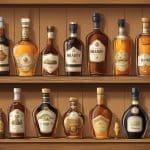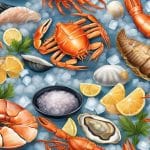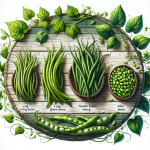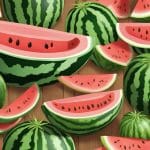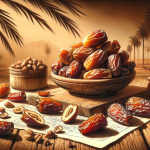Types Of Champagne
Champagne is a luxurious and celebratory drink that is enjoyed all over the world. However, not all Champagne is created equal, and there are many different types to choose from. Understanding the various types of Champagne can help you select the perfect bottle for any occasion.
Champagne Classification
Champagne is classified based on its level of sweetness, which is determined by the amount of sugar added to the wine during production. The driest Champagne is known as brut nature, while the sweetest is called doux. Other classifications include extra brut, brut, extra dry, sec, demi-sec, and doux. Each classification has its own unique taste and level of sweetness, making it important to choose the right one for your palate.
Grape Varieties and Styles
Champagne is made from three grape varieties: Chardonnay, Pinot Noir, and Pinot Meunier. Each grape brings its own unique flavor and style to the wine. Blanc de Blancs Champagne is made entirely from Chardonnay grapes and is known for its light and crisp taste. Blanc de Noirs Champagne is made from Pinot Noir and Pinot Meunier grapes and has a fuller, richer flavor. Rose Champagne is made by adding a small amount of red wine to the blend, giving it a pink color and a fruity taste.
Key Takeaways
- Champagne is classified based on its level of sweetness, which ranges from brut nature to doux.
- Champagne is made from three grape varieties: Chardonnay, Pinot Noir, and Pinot Meunier, each with its own unique flavor and style.
- The different types of Champagne, such as Blanc de Blancs, Blanc de Noirs, and Rose, offer a range of flavors and colors to suit any palate.
Champagne Classification
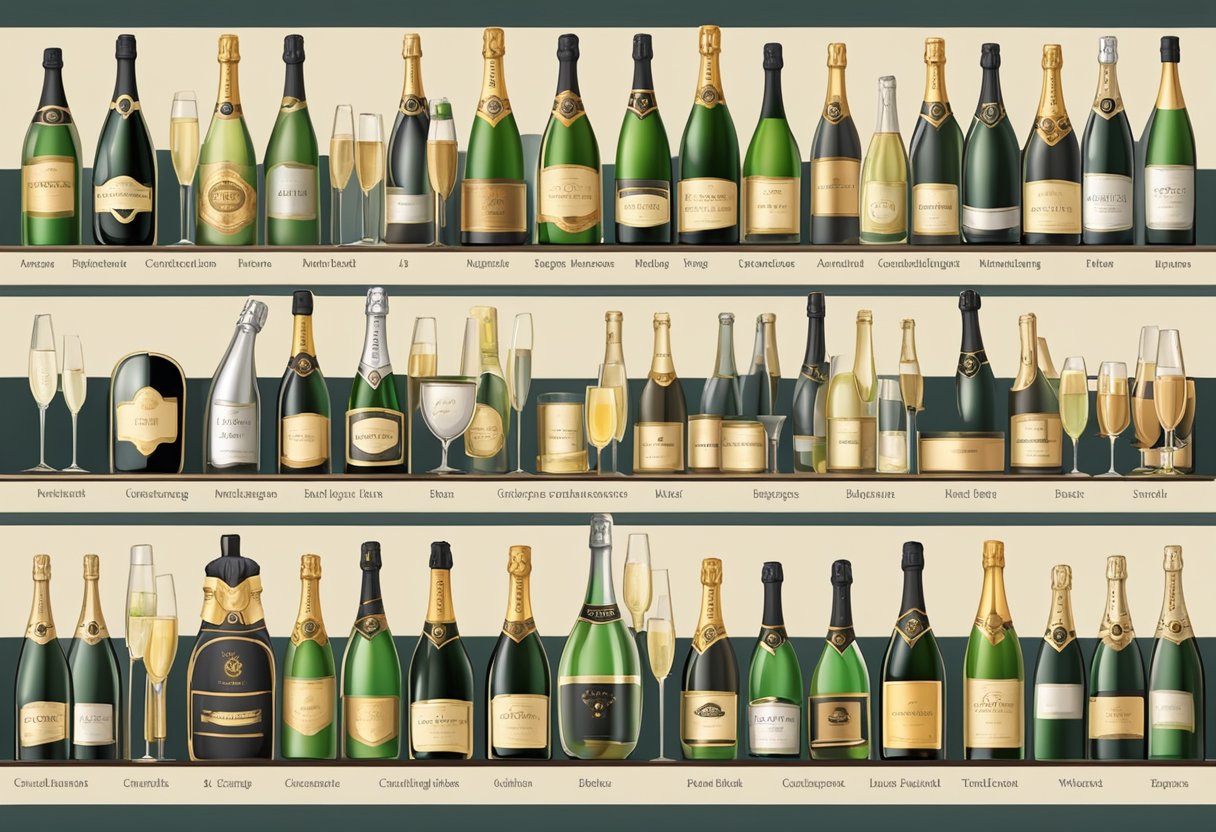
Champagne is a sparkling wine that comes from the Champagne region of France. It is a wine that is known for its elegance and sophistication. Champagne is classified based on various factors, including sweetness level, production method, and vintage. In this section, we will discuss the different classifications of Champagne.
By Sweetness Level
Champagne is classified based on its sweetness level, which is determined by the amount of sugar added during the production process. The following are the different sweetness levels of Champagne:
- Brut Nature: This is the driest Champagne, with zero sugar added during the production process.
- Extra Brut: This Champagne has a very low sugar content, with less than 6 grams of sugar per liter.
- Brut: This is the most popular Champagne, with a sugar content of less than 12 grams per liter.
- Extra Dry: This Champagne has a slightly higher sugar content than Brut, with 12 to 17 grams of sugar per liter.
- Sec: This Champagne has a medium sweetness level, with 17 to 32 grams of sugar per liter.
- Demi-Sec: This Champagne is sweeter than Sec, with 32 to 50 grams of sugar per liter.
- Doux: This is the sweetest Champagne, with more than 50 grams of sugar per liter.
By Production Method
Champagne is also classified based on its production method. The traditional method, also known as the méthode champenoise, is the most common method used to produce Champagne. This method involves a secondary fermentation that takes place in the bottle, which gives Champagne its signature bubbles.
By Vintage
Champagne can also be classified based on its vintage. Vintage Champagne is made from grapes that were harvested in a single year. Non-vintage Champagne, on the other hand, is made from a blend of grapes from different years. Vintage Champagne is usually more expensive than non-vintage Champagne, as it is considered to be of higher quality.
In conclusion, Champagne is a wine that is classified based on its sweetness level, production method, and vintage. The sweetness level of Champagne ranges from Brut Nature to Doux, while the production method is usually the traditional method. Vintage Champagne is made from grapes harvested in a single year, while non-vintage Champagne is made from a blend of grapes from different years.
Grape Varieties and Styles
Principal Grape Types
Champagne is typically made from a blend of three grape varieties: Chardonnay, Pinot Noir, and Pinot Meunier. These three grapes account for almost all plantings in the Champagne region. Chardonnay is a white grape variety that adds elegance and finesse to the wine. Pinot Noir is a red grape variety that contributes body and structure to the wine. Pinot Meunier is another red grape variety that adds fruitiness and freshness to the wine.
Blanc de Blancs is a style of Champagne made exclusively from Chardonnay grapes. This style is characterized by its lightness, delicacy, and crisp acidity. Blanc de Noirs is another style of Champagne made from either Pinot Noir or Pinot Meunier, or a blend of both. This style is typically fuller-bodied and richer than Blanc de Blancs.
Champagne Styles
Champagne comes in a variety of styles, each with its own unique characteristics. Brut is the most common style of Champagne and is characterized by its dryness. Extra Brut and Brut Nature are even drier styles, with little to no added sugar. Demi-Sec is a slightly sweeter style, with a touch of sweetness that balances the acidity of the wine. Doux is the sweetest style of Champagne, with a high level of residual sugar.
Rosé Champagne is a style of Champagne that is made by adding a small amount of still red wine to the blend. This gives the wine a pink color and adds fruity and floral notes to the wine. Rosé Champagne can be made from any of the three grape varieties used in Champagne.
In conclusion, the three principal grape varieties used in Champagne are Chardonnay, Pinot Noir, and Pinot Meunier. These grapes are used to create a variety of styles, from the dry Brut to the sweet Doux. Blanc de Blancs and Blanc de Noirs are two popular styles of Champagne, each with its own unique characteristics. Finally, Rosé Champagne is a style of Champagne that adds a touch of color and fruitiness to the wine.
Champagne Regions and Terroirs
Major Regions
Champagne is a sparkling wine produced in the Champagne region of northern France. The region is divided into five major areas: Montagne de Reims, Vallée de la Marne, Côte des Blancs, Côte de Sézanne, and Aube. Each of these regions has a unique terroir that contributes to the distinctive taste of the Champagne produced there.
Montagne de Reims is known for its Pinot Noir grapes, which are used to produce full-bodied Champagnes with a rich flavor. Vallée de la Marne is known for its Pinot Meunier grapes, which produce a fruity Champagne with a floral aroma. Côte des Blancs is known for its Chardonnay grapes, which produce a light and elegant Champagne with a citrusy flavor.
Côte de Sézanne is a smaller area with clay-rich, silt, and chalky soil types. The Champagnes produced here are known for their freshness and elegance. Aube, also known as Côte des Bar, is separated from the main region of Champagne and is known for its limestone soil type. The Champagnes produced here are richer and hold more rustic characters.
Classification System
The Champagne region has a classification system that ranks vineyards based on their quality. The system is divided into three categories: Grand Cru, Premier Cru, and Autre Cru. Grand Cru vineyards are considered to be the best and are located in the top-rated villages of the region. Premier Cru vineyards are the second-best and are located in the villages that are ranked just below the Grand Cru vineyards. Autre Cru vineyards are the rest of the vineyards in the region.
The regional classification system is another way to classify Champagne. The region is divided into four zones: A, B, C, and D. Zone A is the best and includes the Grand Cru vineyards. Zone B includes the Premier Cru vineyards, while Zone C includes the Autre Cru vineyards. Zone D includes vineyards that are not classified.
In conclusion, the Champagne region of northern France is divided into five major areas, each with a unique terroir that contributes to the distinctive taste of the Champagne produced there. The region also has a classification system that ranks vineyards based on their quality, which helps consumers identify the best Champagnes available.
Tasting Notes and Food Pairings
Identifying Flavors and Aromas
Champagne is a sparkling wine that has a unique taste and aroma. It is known for its high acidity, which gives it a refreshing and crisp taste. Champagne has a citrusy and fruity flavor that is often accompanied by a subtle brioche note. The brioche flavor is a result of the yeast used to ferment the wine.
When tasting Champagne, it is essential to pay attention to its flavors and aromas. The taste of Champagne can vary depending on the type of grape used to make it. For instance, Blanc de Blancs Champagne is made from 100% Chardonnay grapes and has a lemon and apple-like fruit flavor. In contrast, Blanc de Noirs Champagne is made from Pinot Noir or Pinot Meunier grapes and has a more robust and fruity taste.
Champagne Pairings
Champagne is a versatile wine that pairs well with a variety of dishes. It is often served as an aperitif to stimulate the appetite before a meal. Its high acidity makes it an excellent pairing for oysters and other seafood dishes. The effervescence of Champagne also helps to cut through the richness of fatty foods like foie gras and fried chicken.
When pairing Champagne with food, it is essential to consider the wine’s acidity and flavor profile. For instance, a Brut Champagne pairs well with salty or savory dishes like cheese, charcuterie, and smoked salmon. A Blanc de Blancs Champagne pairs well with lighter dishes like salads and seafood. A Ros√© Champagne pairs well with spicy dishes like Thai or Indian food.
In conclusion, Champagne is a versatile wine that can be enjoyed on its own or paired with a variety of dishes. Its high acidity and fruity flavor make it an excellent pairing for seafood and other light dishes. When tasting Champagne, it is essential to pay attention to its flavors and aromas to fully appreciate its unique taste.
Champagne Production and Aging
The Winemaking Process
Champagne production is a complex and highly regulated process that involves several stages. The process starts with the harvesting of the grapes, which are then pressed to extract the juice. The juice is then fermented in stainless steel tanks or oak barrels to produce the base wine.
The base wine is then blended with other wines to create the desired flavor profile, and a mixture of sugar and yeast is added to start the second fermentation. This process produces carbon dioxide, which creates the bubbles in the champagne. The champagne is then bottled and aged for a minimum of 15 months, with some cuvées being aged for several years.
Aging and Yeast Interaction
During the aging process, the champagne undergoes a series of chemical reactions that give it its unique flavor and aroma. One of the most important reactions is the interaction between the yeast and the wine. After the second fermentation, the yeast cells die and settle at the bottom of the bottle, forming a layer known as lees.
The longer the champagne is aged on the lees, the more complex and intense its flavor becomes. This process is known as autolysis, and it releases compounds such as amino acids, fatty acids, and sugars that contribute to the champagne’s flavor and aroma.
The amount of residual sugar in the champagne also affects its flavor. Champagne can be classified into several sweetness levels, ranging from brut nature (no added sugar) to doux (very sweet). The sweetness level is determined by the amount of sugar added to the champagne after disgorgement, which is the process of removing the lees from the bottle.
In conclusion, the winemaking process and aging of champagne are critical factors that determine the final flavor and aroma of the wine. The interaction between the yeast and the wine during aging plays a crucial role in developing the champagne’s unique character. The amount of residual sugar also affects the sweetness level and flavor profile of the champagne.

